Honor Award
The Digital Evolution of Warfare: Protocol for Landscape Manipulation
Kunkook Bae, Student ASLA; Ellen Garrett, Student ASLA; and Connie Migliazzo, Student ASLA, Graduate, Harvard Graduate School of Design
Faculty Advisors: Pierre Bélanger, ASLA and Niall Kirkwood, FASLA
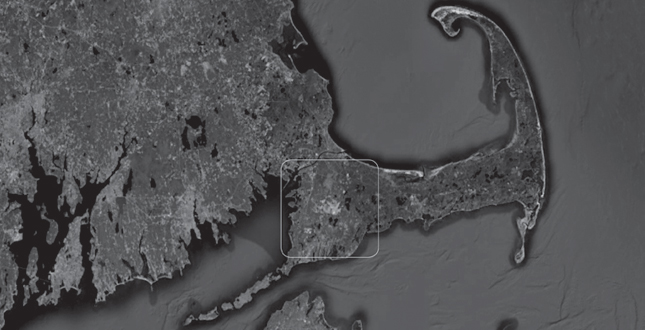 Close Me!
Close Me!Locator Plan. Massachusetts Military Reservation.
Download Hi-Res ImageImage: Kunkook Bae, Ellen Garrett, and Connie Migliazzo
Image 1 of 16
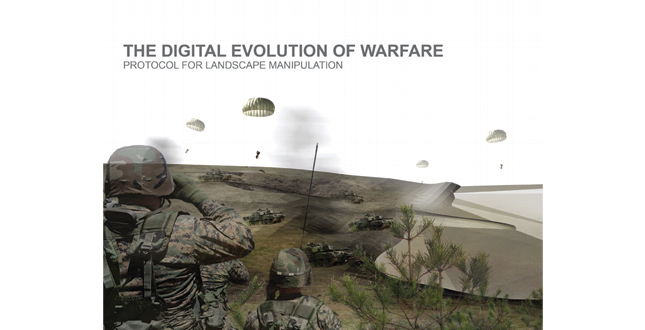 Close Me!
Close Me!The Digital Evolution of Warfare. Protocol for landscape munipulation.
Download Hi-Res ImageImage: Kunkook Bae, Ellen Garrett, and Connie Migliazzo
Image 2 of 16
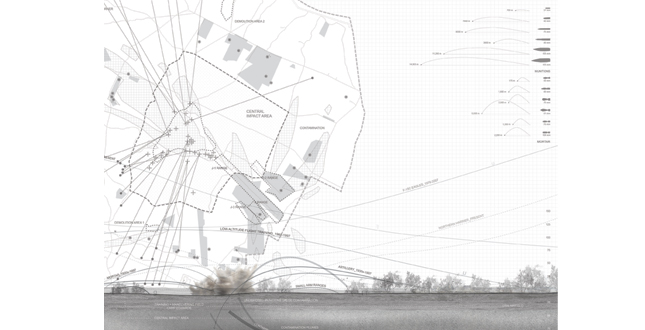 Close Me!
Close Me!Historical Ammunition and Contamination Flows. Documentation of impacts on site.
Download Hi-Res ImageImage: Kunkook Bae, Ellen Garrett, and Connie Migliazzo
Image 3 of 16
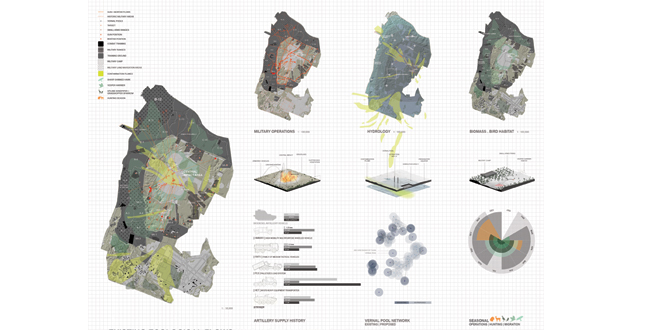 Close Me!
Close Me!Existing Ecological Flows. Mapping site conditions.
Download Hi-Res ImageImage: Kunkook Bae, Ellen Garrett, and Connie Migliazzo
Image 4 of 16
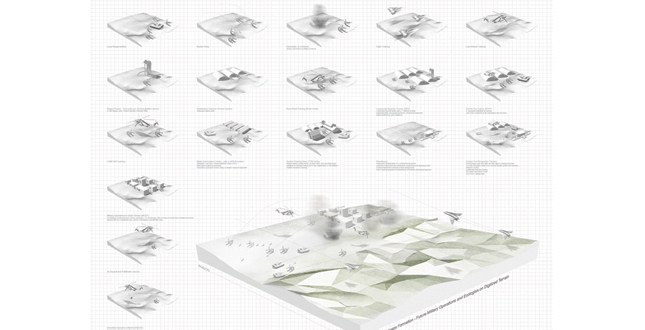 Close Me!
Close Me!Transition of Military Operations. Catalog.
Download Hi-Res ImageImage: Kunkook Bae, Ellen Garrett, and Connie Migliazzo
Image 5 of 16
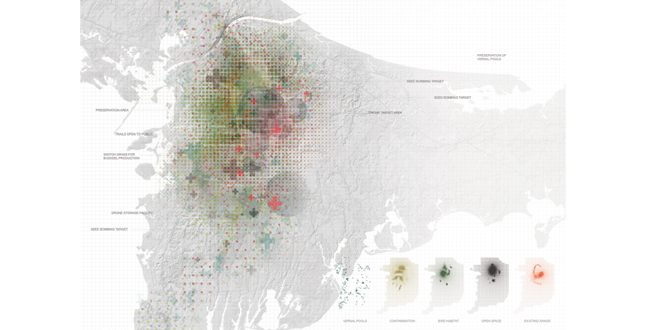 Close Me!
Close Me!Boundary Strategy. Redefining Edges.
Download Hi-Res ImageImage: Kunkook Bae, Ellen Garrett, and Connie Migliazzo
Image 6 of 16
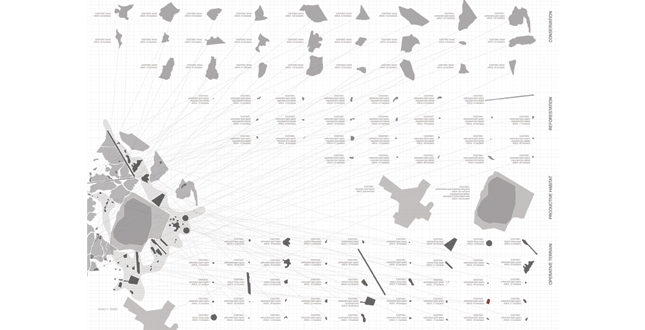 Close Me!
Close Me!Critical Zones of Intervention. Site indexing of Potential Areas of Development.
Download Hi-Res ImageImage: Kunkook Bae, Ellen Garrett, and Connie Migliazzo
Image 7 of 16
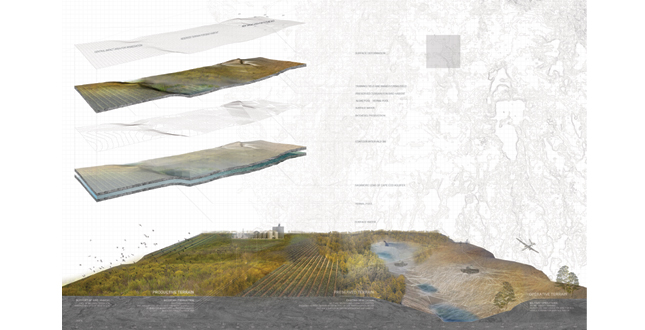 Close Me!
Close Me!Infrastructural Ecologies. Site specific strategies.
Download Hi-Res ImageImage: Kunkook Bae, Ellen Garrett, and Connie Migliazzo
Image 8 of 16
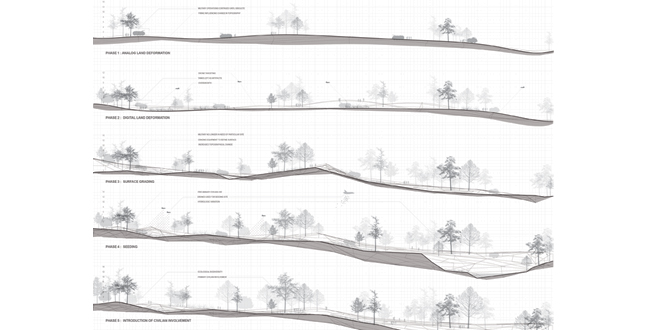 Close Me!
Close Me!Surface Deformation Series. Landform phasing.
Download Hi-Res ImageImage: Kunkook Bae, Ellen Garrett, and Connie Migliazzo
Image 9 of 16
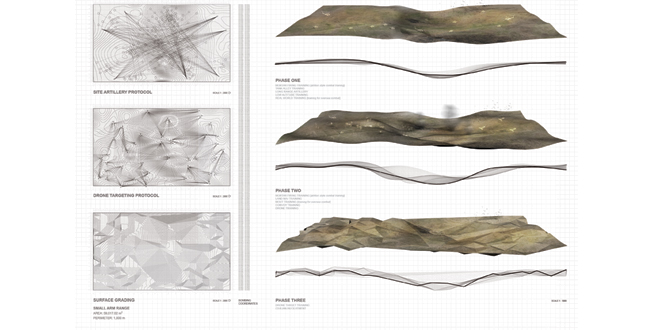 Close Me!
Close Me!Construction of Landform. Operation based land transformation strategy.
Download Hi-Res ImageImage: Kunkook Bae, Ellen Garrett, and Connie Migliazzo
Image 10 of 16
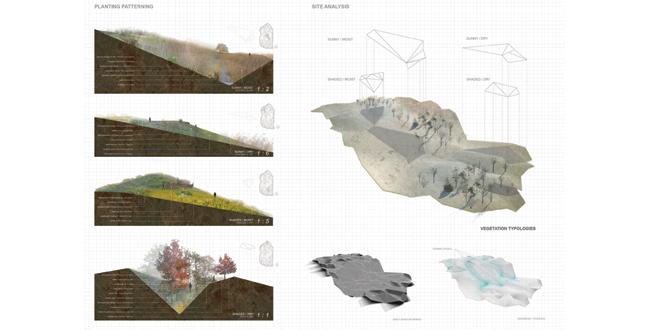 Close Me!
Close Me!Construction of Ecology. Proposed Planting Patterning.
Download Hi-Res ImageImage: Kunkook Bae, Ellen Garrett, and Connie Migliazzo
Image 11 of 16
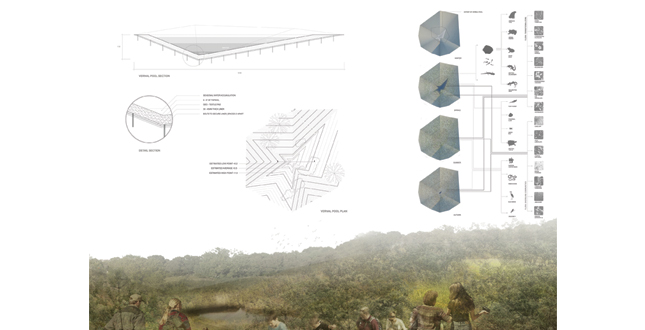 Close Me!
Close Me!Construction of Ecology. Vernal pool development.
Download Hi-Res ImageImage: Kunkook Bae, Ellen Garrett, and Connie Migliazzo
Image 12 of 16
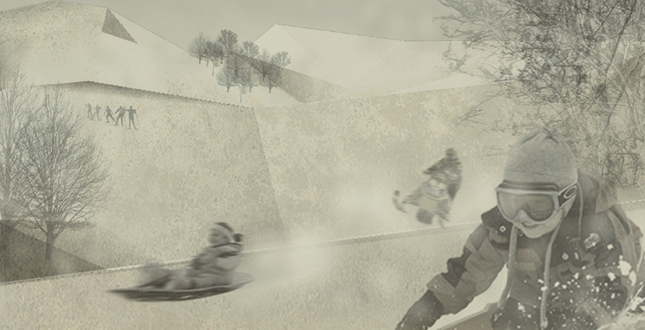 Close Me!
Close Me!Civilian Site Usage. Seasonal adaptation.
Download Hi-Res ImageImage: Kunkook Bae, Ellen Garrett, and Connie Migliazzo
Image 13 of 16
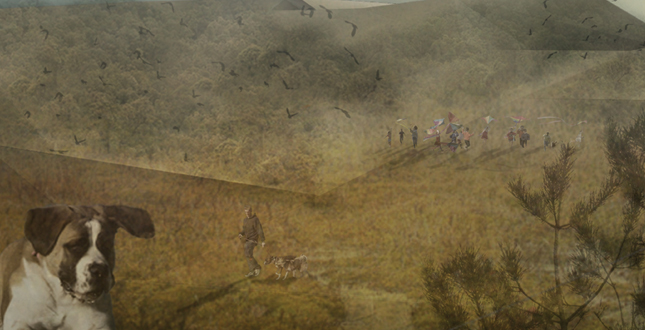 Close Me!
Close Me!Civilian Site Usage. Seasonal Adaptation cont.
Download Hi-Res ImageImage: Kunkook Bae, Ellen Garrett, and Connie Migliazzo
Image 14 of 16
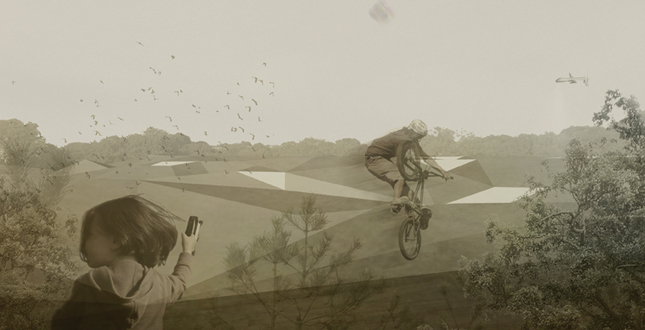 Close Me!
Close Me!Civilian Site Usage. Seasonal Adaptation cont.
Download Hi-Res ImageImage: Kunkook Bae, Ellen Garrett, and Connie Migliazzo
Image 15 of 16
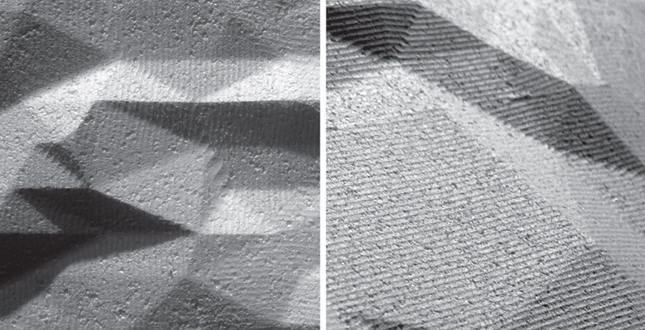 Close Me!
Close Me!Physical Model. Terrain studies.
Download Hi-Res ImageImage: Kunkook Bae, Ellen Garrett, and Connie Migliazzo
Image 16 of 16
Project Statement
Analog technology that once dominated field terrain operations is currently yielding to advanced digital practices to better adapt to urbanized combat. This phenomena affects landscape at the surface level. Digital technologies allow for specific, almost surgical operations within tight urban networks, rendering the standard two-dimensional Cartesian grid obsolete. The Massachusetts Military Reservation provides a testing ground for advanced technologies, such as unmanned surface vehicles and drones, to transform organic terrain into a 3-dimensional grid of scaled ecotones.
Project Narrative
As we approach a world population of 85% urban residents, so too will warfare and its training shift to adapt to this unique topography. The Cartesian grid, associated with analog military formations, gives way to a more intricate, triangulated grid of digitally analyzed terrain. The realignment of the Massachusetts Military Reservation harnesses the potential of future digital technologies to not only allow military operations to continue & stay current, but also to allow for a less destructive, more deliberate and precise impact on the 22,000-hectare landscape. The site historically allowed for large-scale munitions and field training, particularly in the Central Impact Area, leaving behind large underground contamination plumes and demolition areas. MMR still hosts an active training site for overseas combat. By indexing historical, existing, and future military operations, the gradient from analog to digital presents itself as a major trend in the shift towards urbanized combat.
At the site scale, military and ecological operations are overlaid to understand how these systems interact with one another. The Central Impact Area is now no longer used for targeting and should be programmed with low impact activity. However, the military requires continued use on the site, so our challenge is to incorporate intensive training without exacerbating the existing ecological condition. At the regional scale, selected ecological and military systems interact independently from the existing site boundary, defining a new boundary that encompasses critical zones for development. All potential sites for development are categorized into four types of strategies: reforestation, conservation, biofuel production, and military operations.
These four strategies manifest themselves physically as a network across the site. Biofuel production resides primarily within the central impact area in order to avoid further destruction. Perennial grasses are harvested in specific zones so as to not disturb bird habitat. The primary strategy, continued military operation, exists within former military ranges, which are open patches in an otherwise highly vegetated terrain for future phasing of biodiversity. We will perform groundwork on these strategic military sub-sites through a phasing of analog to digital technologies that transform the organic terrain into a 3-dimensional geometric grid of scaled ecotones. The micro-climates created by these different scales will have a dual purpose: they will provide more current three-dimensional target practice for training, while allowing for a future phasing of different types of plant material and hydrological patterns. This strategy can be understood as a process of land transformation through military protocol. The landscape physically registers the shift in technology through a faceted groundwork operation. The first protocol calls for existing technology use on site, such as tanks and mortar firing to intensify the existing topography. Analog technologies perform a “rough pass” altering the topography at a more macro scale. As digital technologies come online, the terrain becomes more precisely altered, as a surgical procedure- allowing for exact three-dimensional targeting within the landscape. These digital targets carve the site at a micro scale resulting in a faceted, digitized surface. The military then shifts to a different site, leaving behind a dynamic surface condition that has the potential for microclimatization and programmed recreational use.
Ecological restoration takes place in a specific node after the military terminates target practice on that patch. The site analysis of slope, drainage, and sunlight exposure determine planting patterns. Vegetation typologies show four example conditions on the site that suggest varied conditions for biodiversity. Natural pooling at low points creates opportunities for constructed vernal pools. The vernal pools, a unique aspect of this cape landscape, provide a vital habitat for amphibian populations already existing on site. Once vernal pool construction and restorative drone seeding occur, some of the sites will be opened up for potential civilian involvement and recreation in the future. Additionally, the Central Impact Area will be aerially seeded with perennial grasses such as Miscanthus and Switchgrass. These grasses will then be rotationally harvested in small, dispersed patches for biofuel, so as to power the military machinery, but not severely impact the existing rare, ground-foraging, grassland bird species.
The military groundwork and subsequent ecological restoration will be phased with multiple sites simultaneously in order to accommodate for the 3800 soldiers training at the base monthly, while still allowing for a long lifespan of protocol. The military’s use of the groundwork flows across the site, using only select number of sites at a time and leaving a faceted terrain in its wake. The military funds ecological restoration of the groundwork sites, then the restored landscape will be opened to the public with the potential for recreational activities at varying levels of impact. The future of warfare depends on efficiency. The capacity of the digital protocol allows for a simple strategy to yield complex and heterogeneous results. With the digitization of warfare becoming a reality, this reservation has the potential to become an operative synthesis of both military and ecological preservation.





